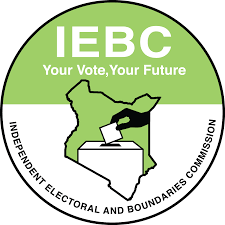IEBC bags Sh7b more for new electoral units
By Mwangi Alberto, March 17, 2023The stage is set for the review of boundaries after Members of Parliament approved an additional Sh7.2 billion for the exercise.
Lawmakers approved a report of the Budget and Appropriation Committee (BAC) that proposed the allocation to the Independent Electoral and Boundaries Commission (IEBC) and another allocation of Sh1 billion for the construction of Uchaguzi Centre.
The allocation is over and above the ceiling of Sh4.25 billion the commission has been given for the management of election processes.
“Delimitation of boundaries; additional Sh7.2 billion for boundary delimitation process,” the report.
The last boundary review, which created the current 290 constituencies, was undertaken in February 2012 by the Andrew Ligale-chaired Interim Independent Boundaries Review Commission.
A periodic review of constituency boundaries is necessary to keep up with population growth to accommodate new constituencies for populous units. This will in turn guarantee equitable representation and fair distribution of resources such as constituency funds.
Article 89(2) of the Constitution requires IEBC to undertake delimitation of boundaries between eight to 12 years, and the next phase, which should conclude by 2024, is to be guided by the 2019 census that placed the population at 47.5 million.
The coming boundaries review is expected to turn into a battle pitting leaders from populous regions against those representing expansive but less populated areas. Already lawmakers from Mount Kenya region have been pushing for the one-man-one shilling campaign on grounds that despite their constituencies being populous, they have been under-represented, a move that undermines allocations of their regions.
At the heart of the battle is the push to retain 27 constituencies, which were allowed to exist despite not meeting their various population quotas.
Also at stake is the creation of extra constituencies and wards in populous areas for fair representation and equal distribution of resources.
Already, Ruiru MP Ng’ang’a King’ara, whose constituency has 172,088 registered voters, as per IEBC and a population of over 500,000 people has kicked off a campaign to have it split into two, Ruiru and Githurai constituencies.
King’ara argues that with the current situation, his people have been disenfranchised in terms of representation and distribution of national resources.
Protected constituencies
“The irreducible minimum that we will be putting forward is to have Ruiru and Githurai constituencies. In other areas, the sub-counties are constituencies. I have already reached out to the commission with the suggestions and I will put up a fight on the same because that is the only way to ensure we have fair representation and allocation of money,” Ng’ang’a said.
In Nyeri, which has three protected constituencies—Kieni, Tetu and Mukurwe-ini—Senator Wahome Wamatinga is pushing to not only have the three retained, but ensure Kieni is split into two.
The Constitution demands that the population of a constituency must be higher or lower than its quota by 40 per cent for cities and sparsely populated areas, and 30 per cent for other areas.
Additionally, IEBC is required to take account of geographical features and urban centres, community of interest, historical, economic and cultural ties; and means of communication of a region.
Although IEBC has no power to reduce the constituencies from the set 290, it has the power to merge and propose new constituencies but has the latitude to change the number of wards from the current 1,450.
The boundaries review matter was also a subject of the failed Building Bridges Initiative (BBI) debate where leaders from populous regions demanded introduction of the proportional representation system to attain equality of the vote by increasing the number of constituencies but those from less populated ones want their areas considered based on landmass.
BBI had proposed an additional 70 new constituencies, whereby the larger Rift Valley was to get 23 new constituencies, Nairobi 12, Central Kenya 11 and Coast 10.
Had the Constitutional Amendment Bill 2020, sailed through, Kiambu, which has a population of 2.5 million people as per 2019 census, would have gotten six new constituencies to have 18, Nakuru (five), Kilifi (four) while Uasin Gishu, Narok, Kajiado, Mombasa, Kwale and Bungoma three each.
